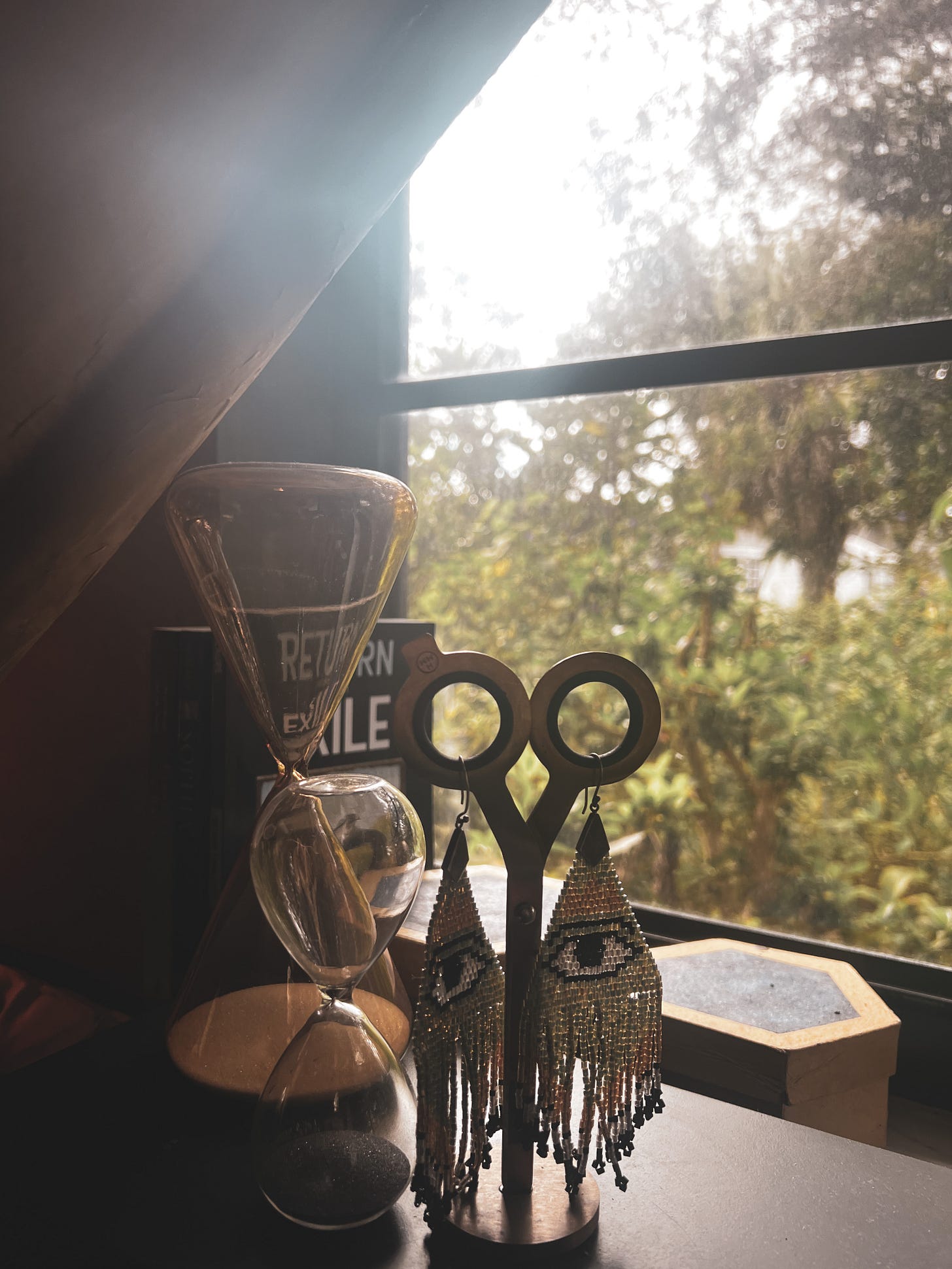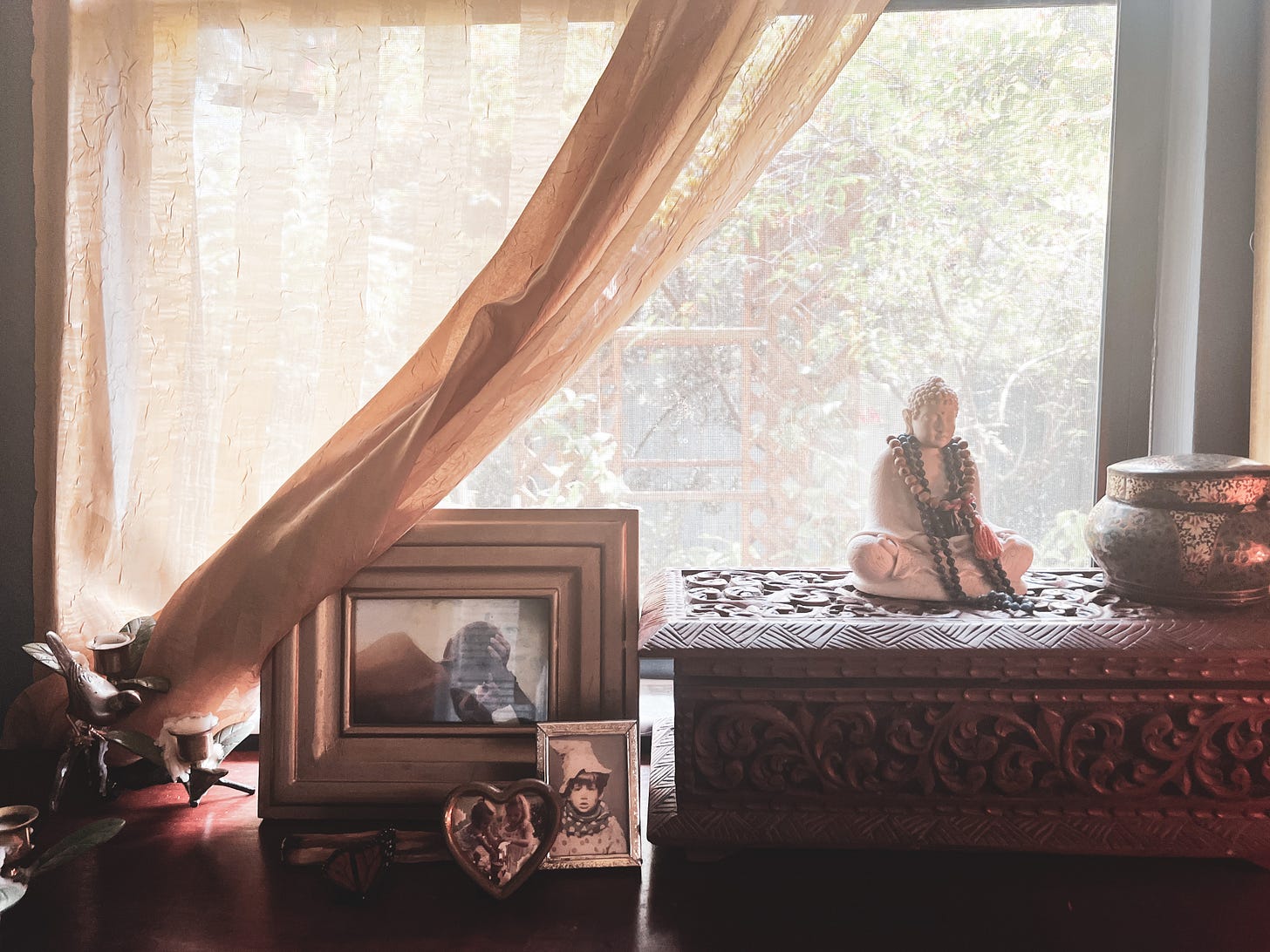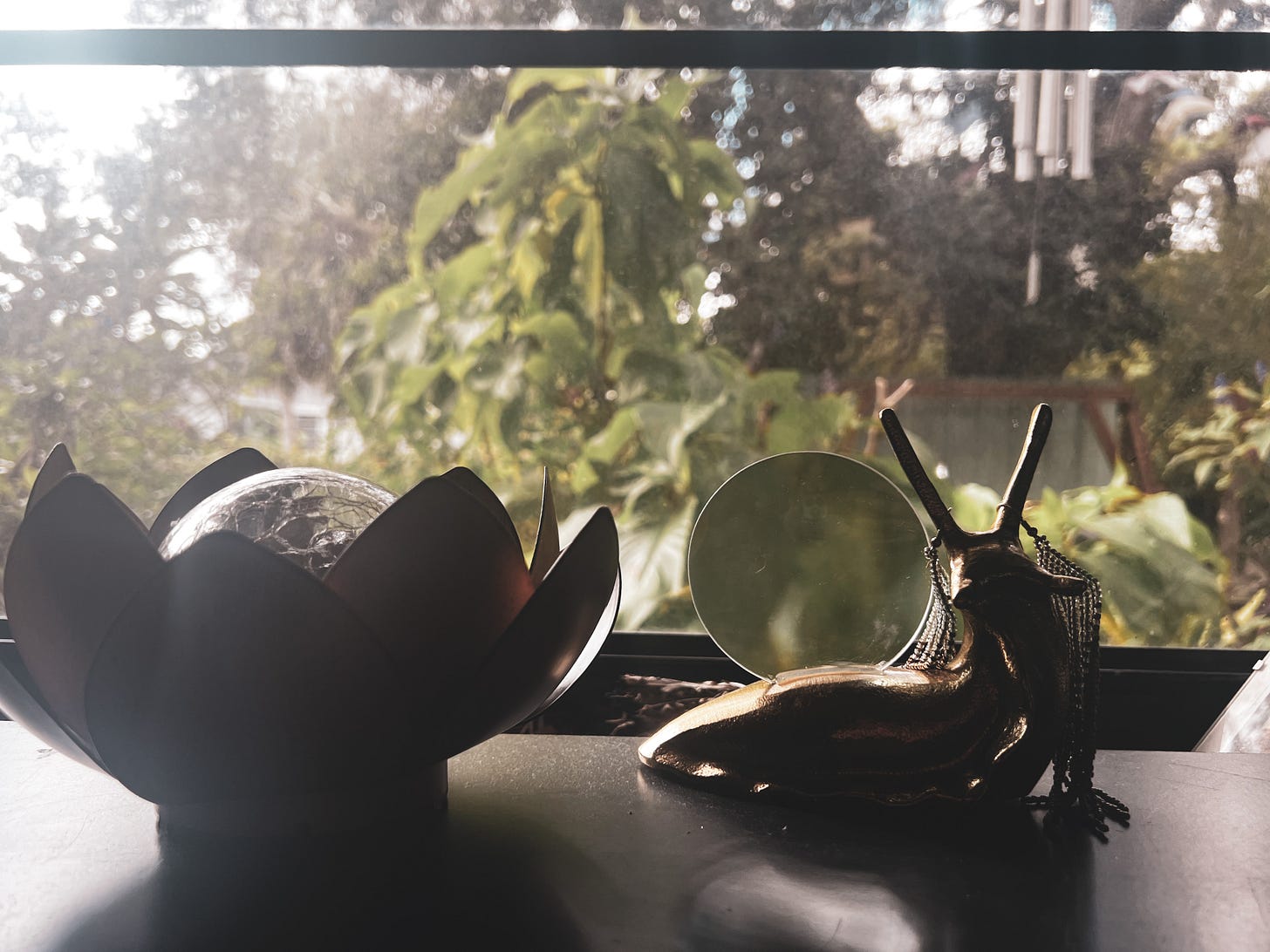This morning I tended to my home office. This room was my bedroom for much of my adolescence, and since moving back into this house about a year ago, just weeks before I gave birth, I’d describe it most of the time as “a beautiful mess.“ Most of the clutter is meaningful, some of it is beautiful, and I don’t have as much time as I’d like to tend it. So this morning, with baby and husband away at the gym for swim class, I’ve taken the opportunity to take my own advice and be an agent of regeneration within this personal sanctuary of mine.
Recently, I’ve been getting at the root of what I believe is the essence of regeneration, a term which has become a bit buzzwordy, a bit of a cultural meme. As someone deeply passionate about this idea, I love that it’s on so many peoples’ lips, but I don’t love when it gets watered down to the point of not really meaning anything.
For me, regeneration is a natural process of living systems which draws from and integrates the past in the present for a more fertile, promising, thriving future for all life. This can be applied to soil as in regenerative agriculture practices or land regeneration. This can be applied to business practices as we see visionaries like Carol Sanford modeling, and I believe it can be applied to every dimension of life and culture including in our own lives. In fact, I believe that beginning with our own lives, our families, our homes will help us to carry patterns of regeneration into all other areas of our lives. I believe this is necessary for humanity to get through all of the significant existential threats we are facing. I also believe it can be fun, beautiful, and enriching for our lives.
It helps to have language to give clarity to these patterns. I believe that the foundational dynamic of entropy and syntropy is a core pattern at the root of all living systems’ capacity for regeneration.
First, a definition of terms. Many of us have heard the term entropy, it’s less common to be familiar with its inverse, syntropy. To keep things simple, I’ll quote myself from my previous essay What is Syntropy?:
Entropy is well known as the continuous expansion of the universe and the source of a lot of people’s existential dread.
That expansion is a process of decay. Entropy is what brings something like a solar system which at one time had an order and a harmony and a rhythm that was predictable into a disordered and chaotic field of decaying space objects.
Syntropy on the other hand, is the force that takes scattered space dust and compresses it into a new star, new planets, a new arm of a spiral galaxy.
Both processes are happening, just in different places in the cosmos, and at different times.
I like to think of syntropy as the inhale of the universe and entropy as the exhale. Together, they give rise to the regenerative cycling of everything in this universe. From the decomposition (entropy) of organic matter to the structures and connections (syntropy) made by mycelia, we can see this pattern is not just in our galaxy, but also in our soil, and everywhere in between.
The reason we don’t know about syntropy is the same reason schools rarely hear from parents about what they’re doing well. Humanity has evolved to have a cognitive bias to primarily notice what’s not right, what’s not working, what’s not harmonious.
I believe that by giving language to the forces that bring chaos back into order, we ourselves can not only notice when it’s happening, but be able to consciously participate in this process every day.
I also believe that entropy gets a bad rap. It’s often a term used as a proxy for existential dread, but when partnered with syntropy, we see entropy not as a looming threat of heat-death, but as an essential phase of the cosmic dance we are all participating in. Both, together, dancing and breathing and flowing through our lives bring about the flux-equilibrium essential to the unfolding of all living systems. This, I believe, is a foundational pattern of regenerative culture.
In family life, our children may sometimes seem to be entirely agents of entropy. Just look at any room my one year old has been in, and you see the scattering of space dust in the chaotic array of books and toys and tissues that he somehow got ahold of and tore into a million little pieces.
As adults, it is our responsibility to model syntropic behaviors for our children to learn that it is possible, and can actually feel really good, to bring order into a space. More than that- that we can get creative in our ordering, that it can look a little different each time, that we can bring novelty and beauty into our spaces by tending to them with care.

This year I’ve been working as an Experiential Design Consultant at ChoZen, an eco-spiritual retreat center founded by dear friends, which has been expanding into the lands and communal houses we were raised on at Kashi Ashram. It’s been such a blessing and a privilege to be involved in this transition as I love the land, the houses, and the people involved very much.
One of my responsibilities has been to craft simple earth altars at key places throughout the property, a task that brings me tremendous joy and satisfaction.
Many of these altars are in places where altars were previously made, but have become messy, overgrown, decayed, or otherwise entropic. So my first task is completing that phase of entropy by clearing everything away, respectfully. My next task is listening deeply to the guidance of the land and unique qualities of each site. And my final task is pulling together the pieces that make sense for each spot and activating the altar. Each is different, unique, and powerful often in its simplicity.
Recently I popped in to a space that the staff of mostly young women has made comfortable as a sort of break room and office. Erica, who I was with, showed me the altar they’ve been tending. It was simple, beautiful, and she said that it changes every day. I was so glad to hear it. I believe the most powerful moments with an altar are when you clear it off, dust and clean everything, and reset it with fresh awareness.
I imagine many of us have been in spaces where an altar has accumulated too much- too many objects, tchotchkes, and inevitably, dust. This is not just true of personal, small scale altars, but the large scale altars of organized religion, both physically and metaphorically true. Anything that stays stagnant risks ostentation and the decay of it’s own resonant properties.
By disassembling and cleansing and reassembling in a new way, we are participating in the cosmic breath of both entropy and syntropy in our spaces, in our devotion, in our own minds.
My husband Seth remarks often at how we are surrounded by altars constantly in our home. This is not an accident, nor is it overwhelming. We simply make sure that when there’s a space that can be a meaningful reminder of what is essential and valuable to us (ancestors, the sacred, our family and friends, beauty, wisdom, the living world), we take the time to incorporate symbols of those things into our spaces. And we do our best to keep them feeling fresh and alive.

As I tended to my home office this morning, a space layered with meaningful clutter and beautiful chaos, I felt myself participating in the grand dance of syntropy and entropy. The universe itself breathes through these forces, as do our homes, our altars, our family dynamics, and our very lives.
By taking time to lovingly tend to the old and reintegrate them into the space anew, we mimic the universe's natural rhythms, engaging in an act of mindful regeneration. We're not just cleaning a room; we're attuning to cosmic forces and aligning ourselves with the intrinsic patterns of life itself.
So, the next time you find a moment of stillness, look around you. What could be your personal altar? How could you infuse it with the things that truly matter to you, engaging in a form of syntropy that enlivens both your space and your spirit? If this sparks an actual regeneration of an altar for you, I invite you to share it with me. I'd love to hear about your experiences and see how you've embodied and applied this pattern in your own life and space.





